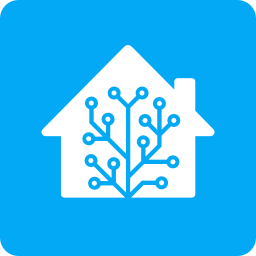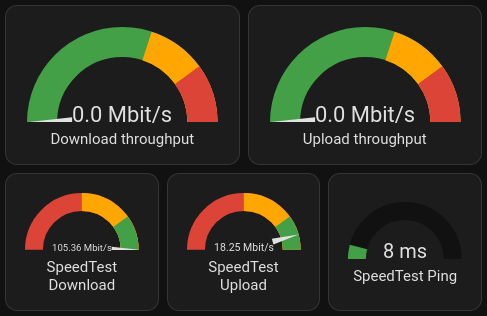

This is a really nice guide, and covers everything from source source to sea, so to speak.
Ideal for someone installing for the first time, thanks for sharing!


This is a really nice guide, and covers everything from source source to sea, so to speak.
Ideal for someone installing for the first time, thanks for sharing!


Security wise, while I love automating everything, I personally would just give them a physical key to the front door. (Or an RFID keyfob system).
What you’d be achieving is the equivalent of keyless car entry, with the additional downside that your son can’t choose not to open the door if something sketchy happens.
And instead of entrusting them with a traditional key that they can treat responsibly, you’re just putting something in their backpack that they don’t have to think about.
If you really want to do it, basically anything in homeassistant that has wireless capability and a state would probably work.
A zigbee radio, and pretty much any device doing anything would do it.
When device_name becomes available, activate door opening.
That’s a pretty neat bit of kit. If they did it in metric sizes, I’d be tempted.
Your meter may have some kind of magnetic flux that occurs as the dial spins, which you might be able to sense and interpret.
I’m curious to hear what people come up with, as I quite fancy one too.
I would be wary of installing anything that actually touches the water that doesn’t come from an accredited manufacturer, however. As you don’t want Ali-express grade metal in your drinking water.
Which unfortunately means the options will be either expensive, or building off the back of other equipment currently installed (water meter, etc).
It was broken for a few weeks of 2024.2 (I think). I ended up learning how to do a manual downgrade while they fixed it!


Asking questions is always good, don’t worry! Feel free to ask more, heck update the thread and ask questions as you go along if you like.
If you list the devices you want to migrate, I’m sure the community will happily highlight any tips, or which will be the easiest to get you started.
It is indeed! Mostly just fiddling around with the settings.
@smeg@feddit.uk, here is a paste of the config so you can play with it:
(If you click show code editor, then paste in, you can then go back to visual editor with things configured)
Speedtest needle gauges and ping with colour change:
type: horizontal-stack
cards:
- type: gauge
min: 0
severity:
green: 80
yellow: 50
red: 0
entity: sensor.speedtest_download
max: 100
needle: true
- type: gauge
min: 0
max: 20
entity: sensor.speedtest_upload
severity:
green: 16
yellow: 10
red: 0
needle: true
- type: gauge
min: 0
entity: sensor.speedtest_ping
severity:
green: 0
yellow: 15
red: 20
max: 100
Air quality with lots of different colours:
type: horizontal-stack
cards:
- type: gauge
entity: sensor.oxford_air_quality_index
needle: false
min: 0
max: 500
segments:
- from: 0
color: '#00e400'
- from: 51
color: '#ffff00'
- from: 101
color: '#ff7e00'
- from: 151
color: '#ff0000'
- from: 201
color: '#8f3f97'
- from: 301
color: '#800000'
name: 'Air quality: PM2.5'
unit: µg/m3
- type: gauge
entity: sensor.external_environment_f
max: 40
severity:
green: 18
yellow: 25
red: 30
needle: false
min: -10
- type: gauge
entity: sensor.oxford_uv_index
max: 10
severity:
green: 0
yellow: 3
red: 6
Once you’ve got your head around horizontal stacks (lets you put multiple small dials together), it’s mostly picking thresholds and settings colours.


Currently, it’s using a Waze integration.
The coolest thing, is that it’s given me a really nice data set for when are the bad times to drive across town are. (Sadly, it’s during the morning and afternoon school runs).
It also reveals that the travel time on average is impacted significantly by the school holidays, and the weather.



My “What’s the internet connection up to?” card:

My “Leaving the house” card:

It’s nice to compare the local predicted temperature, and local sensor.


I’ll pop this as a top level comment, as so many people have made recommendations, thank you everyone!
Valetudo absolutely sounds like the way forward.
After more digging, it looks like mopping, unless you spend lots of money, is kinda basic on all models.
So I’ve gone with a basic second hand machine that works with Valetudo, and has simple mopping.
Hopefully it’ll let me get a good idea of what is/isn’t possible, and if a £600 full on mopping device is worth it!
And who knows, if spending that much is worth it, I can have one on each floor, like a fancy rich person.
(I also need to find out how well machines deal with poo!)


I have done this for my leak detectors.
Almost everything else obeys DND, but water? That’s gonna wake me up.


The first few devices I bought were z-wave. £40 for the radio, and £40-ish for the devices.
I would not recommend starting that way! I nearly balked at the cost of the radio.
However, it did work out, as my main heating control is z-wave, and stability in that is really important.


This is the github for it.
Honestly, I’m half expecting the version I eventually get not to be compatible!


Same here. Not having a path to the internet by default is lovely. Local data stays local without any extra config.


I’ve never actually tried doing dev on a zigbee board. A cursory glance puts them at £6.
But I can absolutely understand why ESP is so much more popular. Which is a shame, as I like not having to mess with wifi/BLE.


I found hue bulbs to be a lot more responsive once I ditched the hub, and paired my bulbs directly with a zigbee coordinator.


It’s funny, I’m eyeing up an air conditioner atm.
And the one I’m focussing on looks pretty special, not because it runs tuya, but because absolute gods in the FOSS community have made a complete alternative firmware for it that works with HASS directly on the tuya host hardware.


I’ve never really looked into X10.
A very brief look suggests that the signaling goes over the mains cables? If that’s correct, then the big thing for me would be that it separates the communication from mains electricity. Most people don’t like messing with 240v, unless they absolutely have to.
Which would mean more needs to be done by an electrician.
It definitely threw me the first time I was out of the house.
I decided the best solution was just to limit alerts to non-sensitive things.
While I’m generally very big on privacy, I really don’t give a monkeys if Apple/Google is relaying a message that says “Cat in garden!”